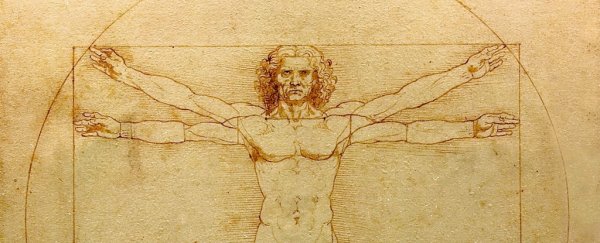Scientists have just announced a hugely ambitious plan to sequence the genome of one of the Renaissance's greatest minds - Leonardo da Vinci.
Involving international geneticists, genealogists, archaeologists, art historians, Bill Gates, and even the Queen, the project sounds more like one of Dan Brown's plot lines than a scientific endeavour, but by the end of it, the researchers hope to gain new insight into da Vinci's lifestyle, diet, physical appearance, and, hopefully, his genome.
The study, which has been labelled "The Leonardo Project", might even reveal whether there were any specific biological characteristics that made da Vinci such an innovative and creative thinker - among his many notable achievements (hello, Mona Lisa), the inventor and artist sketched helicopters and tanks hundreds of years before they were developed.
So how exactly do you go about posthumously sequencing someone's genome? A decade ago, it would have sounded crazy, but thanks to advances in sequencing techniques, we now know that human DNA can be preserved for far longer than previously thought.
Over the past five years alone, scientists have successfully studied the genomes of historical figures such as King Richard III, and Miguel de Cervantes, author of Don Quixote, as well as the fossilised remains of a 430,000-year-old human.
More difficult will be getting access to items that might still have Leonardo da Vinci's DNA on them.
"More and more techniques are being developed to recover DNA from people touching things," Rhonda Roby, a geneticist involved in the Leonardo Project from the J. Craig Venter Institute in California, told Maddie Stone over at Gizmodo.
"I also think there's a possibility of biological material inside paintings … The challenge would be actually getting that material out without damaging the artwork."
To complicate matters, many of da Vinci's old belongings are now owned by some of the wealthiest and most powerful people on the planet, including Bill Gates and Queen Elizabeth II, who both have several of his hand-written journals and sketches. So the team will have to convince them to hand them over temporarily in order to have them tested.
Outlining their project in a special edition of the journal Human Evolution, the researchers explain that, beyond that, they'll also work on identifying the living descendants of da Vinci, and mapping his family tree, in order to get more insight into his genetics and any unique traits he might have passed down.
This will involve using radar to scan the floor of Italian churches to try to locate the bones of da Vinci's father and other family members.
And the team will also be looking for the final resting place of da Vinci's own mortal remains, which is still a mystery to this day. The inventor is believed to be interred in the Chapel of Saint-Hubert in France's Loire Valley, but no one knows for sure whether his bones are actually there.
If they can extract DNA from what are thought to be his remains and then compare that to his living descendants, they hope to be able to confirm once and for all where da Vinci really ended up. See, we told you it it was Da Vinci Code-esque!
But far from just an extreme demonstration of science, we stand to learn a lot from the Leonardo Project - not least of all the inventor's hair colour, eye colour, height, and predisposition to disease.
Beyond that, it's a way to bring science, history, and culture together to shed some light on one of the greatest minds in history, and perhaps come a step closer to isolating some of the genes that are shared by big thinkers.
"I think everyone in the group believes that Leonardo, who devoted himself to advancing art and science, who delighted in puzzles, and whose diverse talents and insights continue to enrich society five centuries after his passing, would welcome the initiative of this team - indeed would likely wish to lead it were he alive today," said Jesse Ausubel, one of the collaborators from Rockefeller University.
The team plans to announce their results to celebrate the 500th anniversary of da Vinci's death in May 2019. We can't wait to see what they find.
